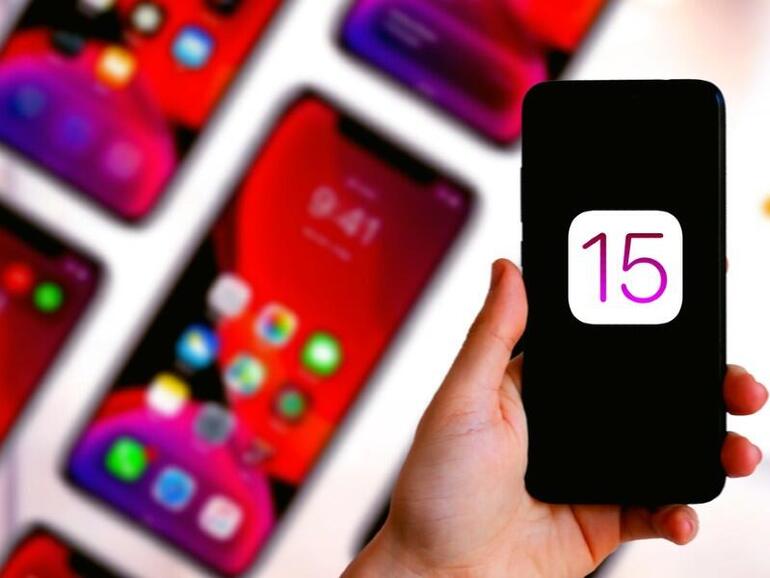[ad_1]
Fixes for 42 vulnerabilities are also included, so it’s a good idea to upgrade your iPhone and iPad now.
” data-credit=”Image: DANIEL CONSTANTE/Shutterstock”>
Image: DANIEL CONSTANTE/Shutterstock

Apple released iOS 15.2 for the iPhone and iPad this week, and with it came the full rollout of a feature that I know I’ve been waiting excitedly for some time to get: The App Privacy Report. Coupled with the app privacy data already displayed on the App Store, iOS 15.2 is giving iPhone and iPad users a new way to see if the apps they use are as trustworthy as they think.
That’s not the only new feature added in iOS 15.2, which included several new usability updates to existing features as well as the expansion of other privacy programs like Hide My Email. In addition, Apple said that there are 42 different bug fixes included in the update, many of which are critical flaws that open up the kernel to arbitrary code execution.
SEE: Password breach: Why pop culture and passwords don’t mix (free PDF) (TechRepublic)
If new privacy features aren’t enough to make you want to spin up the old iOS Software Update page, consider those security bugs hanging out on your pre-15.2 iPhone or iPad a swift kick telling you to do so anyhow.
New features in iOS 15.2
Before we get to the App Privacy Report, how to us it, and what you can learn from it, it’s worth mentioning some of the other features that have been added or expanded upon in iOS 15.2, starting with Hide My Email, which has received a simple, yet obviously needed, new feature: It can be accessed from inside the iOS Mail app.
Hide My Email was added to iOS alongside iCloud+, and is a nifty feature that creates an anonymous email address anytime an iOS user wants to set up a new account without handing over their valuable personal email address to people who may resell it.
Whereas previous iOS versions limited Hide My Email to sites allowing signing in with an AppleID on the web, this new feature lets Mail users simply tap on the From field when composing an email, and selecting Hide My Email from the dropdown menu.
Another feature worth pointing out is Legacy Contact, which allows iOS users to designate a trusted person to give access to their account in the event of the user’s death. You can enroll a person by opening Settings, then tapping on your Apple ID at the top of the screen. From there tap Password & Security, and then look for Legacy Contact, where you can add one or more people.
Once added, an access code is generated that the legacy contact will need, along with a death certificate, to transfer ownership of the account. It’s a good idea for people who have sensitive data behind their AppleIDs that could go missing in the event of an accident. That goes for personal and private use accounts.
How to use the App Privacy Report
The App Privacy Report keeps a running tally of all the network connections your device and its apps make, all the sensor and data access apps have, the most contacted domains, and more. In addition, you can drill down on every one of those categories to get even more details, making the App Privacy Report a one-stop shop for figuring out if anything on your phone is sending or receiving data you don’t want it to be.
You can find the App Privacy Report in the Settings app. With Settings open, scroll down to Privacy, and then go all the way to the bottom of the next screen, where you’ll find App Privacy Report. Tap on that.
A word of note: You may see a blank report if you didn’t previously enable app privacy data logging, which was done in the same spot in the Settings app of previous versions of iOS 15. If you want to see data like that shown below, you’ll have to enable logging and wait for iOS to generate its reports, which from that point forward are a rolling look back at the past seven days.
If you do have data already collected, you can navigate through various screens to find out what hardware elements apps are accessing and when, all of the domains an app contacts and all of the apps that contact a specific domain, and more, as seen in the screenshot below.
” data-credit=””> Three views of the iOS 15.2 App Privacy Report: It’s main screen, a look at details of the Twitter app, and a look at details of a particular domain.
There’s a lot of info to parse in the App Privacy Report, which raises the inevitable privacy question: What about all this data — is Apple using it to privacy-violating ends? According to the description of the report Apple gives on the iPhone, no.
SEE: The iPhone, iPad and Mac users guide to Microsoft 365 (free PDF) (TechRepublic)
“The information displayed by the App Privacy Report is stored locally on your device. If you turn off App Privacy Report, this information will be deleted from your device. If you uninstall an app, the information reported for that app will be deleted,” the in-iOS description reads.
Luckily, the information logged by App Privacy Report isn’t particularly sensitive, and if you’re worried about the data it logs you can disable the App Privacy Report on the same screen you land on when you click on it from the Privacy screen of the Settings app.


